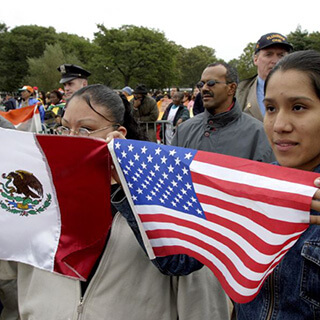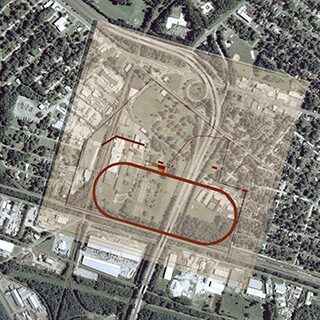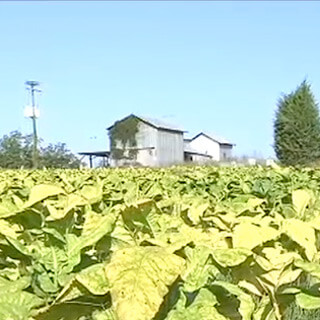Overview
Thomas Chase Hagood reviews Watson W. Jennison's Cultivating Race: The Expansion of Slavery in Georgia, 1750–1860 (Lexington: University of Kentucky Press, 2012).
Review

From colonial founders' initial resistance to slavery to antebellum whites' embrace of it, Watson W. Jennison's Cultivating Race charts the first hundred years of Georgia's Anglo, African, and Native American shared experience. Beginning with the successes and struggles of Austin Dabney—a Revolutionary War hero of mixed ethnicity—Jennison draws readers into the complex world of early Georgia. Like other forgotten Georgians of color, Dabney exemplified the nexus of race and class in early America and epitomizes "the trajectory of blacks in Georgia" (2). For Jennison, a bifurcated society of white versus black, or trifurcated white–black–red, did not emerge as definitively or as early as previous scholars (chiefly Edmund S. Morgan) have suggested. It was the rising Cotton Kingdom's market forces—after Native American removal—that fueled a rigid racial order amid changing class alliances. For Jennison, the slide toward the sectional South of white rule, black oppression, and red removal was not inevitable but resulted from an "ideological struggle over the meaning of citizenship and race that played out between the founding of the nation and the rise of the Confederacy" (3).


Top, General Oglethorpe Statue in Chippewa Square, Savannah, Georgia, May 22, 2014. Photograph by Flickr user BEV Norton. Creative Commons license CC BY-NC-ND 2.0.
Bottom, Detail of General Oglethorpe Statue, Savannah, Georgia, February 12, 2010. Photograph by Flickr user Jennifer Morrow. Creative Commons license CC BY 2.0.
Reconsidering Georgia's racial dynamics between 1732 and 1803, Jennison depicts the English colony as a place shaped by class, and later, spatial contestations. From the utopian dreams of trustee founder James Edward Oglethorpe, he reasons that Georgia was of imperial as well as philanthropic designs. The prohibition of slavery motivated Oglethorpe and his fellow trustees to create a refuge for the common man, namely white, yeoman farmers. The ban on slave importation did not evince anti-slavery persuasion; rather, the founders of Georgia wished to create an environment conducive to the social-mobility of status-seeking, white Englishmen. By 1751, however, this stance eroded under market pressures and the desire of vocal South Carolinian rice planters for a slave-based plantation economy. Jennison unpacks Georgia's slave codes from 1755, 1765, and 1770 to demonstrate how a Savannah-based, Lowcountry elite eventually seized power. Jennison cautions, however, against allowing the presumed simplicity of white freedom versus black slavery to obscure the "murkiness of race and class relations in colonial Georgia" (39–40).

The age of revolutions abroad as well as internal migrations in the United States would continue to fragment and frustrate the settling of Georgia's backcountry and residents' sense of self and citizenship. In contrast to historian Gary Nash's assertion that American independence should be understood as individual and collective acts of resistance crisscrossing racial, ethnic, class, and gender lines, Jennison remains focused on the experience of white Georgia elites. This narrow frame draws on the legacy of Gordon Wood's 1991 magnum opus, The Radicalism of the American Revolution, that similarly omitted women and nonwhites from the record. Regardless of his singular focus, Jennison makes clear that by 1800, Georgia's conservative revolutionaries could broaden their perspective when confronted by the distressing message, reach, and potential consequences of the sweeping revolutions in France and nearby Haiti.

Meeting of White Men and Indians, General Oglethorpe meeting Creek Nation. Print originally published in John Lossing's An Outline History of the United States (Sheldon & Co, 1881), p. 19. Image uploaded by Flickr user Internet Archive Book Images. Image is in public domain.
In the second half of Cultivating Race, Jennison shares some of his most insightful findings. Using evocative stories of runaway slaves and the betrayal and murders of allied and non-allied Native Americans, he contends that the conflicts that wracked the Georgia frontier throughout the 1810s were "the products of tensions created by continued American expansion, which repeatedly erupted into violence" (158). With few slave rebellions, early race relations in Georgia were dominated by white paranoia and stories of runaway slaves taking up arms with Native Americans, Spaniards and Britons in Florida. As cotton replaced rice as Georgia's staple crop and carried settlers deeper into the upcountry, tensions between whites and blacks spread. Following the removal of Creek and Cherokee nations by 1838, white Georgians spread white supremacy throughout the state.

Slavery's development in Georgia made planters richer than they had ever imagined. Planters' economic and ideological legitimacy drew on South Carolinian James Henry Hammond's mudsill theory of racial divisions: convincing poor whites that enslaving African Americans was in their best interests. Jennison surveys white Georgians' opinions on racial and class divisions to great effect, mining the 1852 and 1853 tours of Frederick Law Olmsted, demographic and migratory data, as well as regional comparisons of slave experiences in Savannah as contrasted with the Georgia upcountry.

McIntosh: A Creek Chief, 1838. Painting by Charles Bird King. Courtesy of Wikimedia Commons. Image is in public domain.
Jennison's closing chapter revisits Georgia's nineteenth-century historians—mostly politicians, judges, and a cadre of proslavery intellectuals—who competed to write Georgia history and legitimize their own contributions to the state. Exploring the cultural politics of Native removal, Jennison compares the works of writers like George White in the 1850s—who produced mostly popular works and "collections" on Alexander McGillivray and William McIntosh—with the sanitized reflections of Governors George Gilmer and Wilson Lumpkin. Each writer asserted his own "version of the past," hoping to claim admiration and votes.
Cultivating Race ends abruptly but significantly, analyzing legal cases and opinions of the influential, mid-nineteenth century Georgia Supreme Court justice Joseph H. Lumpkin, who, along with his protégé Thomas R. R. Cobb, did more than most other Georgians to shape how whites understood the design and purposes of the color line. From "the vanguard of the southern movement promoting proslavery ideology in the legal realm," Lumpkin and Cobb "legitimated the institution in Georgia so that the laws reflected the racial views dominant in the cotton kingdom" (290, 298). By defining all African Americans, enslaved and freed, as non-citizens, their work effected an oppressive legacy in law and in the writing of history. Watson Jennison's corrective helps readers trace the tangled roots of American apartheid to the beginnings of the last colonial venture in British North America. 
About the Author
Thomas Chase Hagood is assistant director for faculty development and recognition at The University of Georgia's Center for Teaching and Learning and is co-director of UGA's Reacting to the Past program. His research interests include the cultural and intellectual history of the nineteenth-century US South, frontier migration, and pedagogical innovation in higher education.
Recommended Resources
Text
Baptist, Edward E. The Half Has Never Been Told: Slavery and the Making of American Capitalism. New York: Basic Books, 2014.
Cobb, James C. Georgia Odyssey: A Short History of the State. 2nd ed. Athens: University of Georgia Press, 2008.
Dusinberre, William. Them Dark Days: Slavery in the American Rice Swamps. Reprint, Athens: University of Georgia Press, 2000.
Genovese, Eugene D., and Elizabeth Fox-Genovese. The Mind of the Master Class: History and Faith in the Southern Slaveholders' Worldview. New York: Cambridge University Press, 2005.
———. Slavery in White and Black: Class and Race in the Southern Slaveholders' New World. Cambridge: Cambridge University Press, 2008.
———. Fatal Self-Deception: Slaveholding Paternalism in the Old South. Cambridge: Cambridge University Press, 2011.
Inscoe, John C. Race, War, and Remembrance in the Appalachian South. Lexington: University of Kentucky Press, 2008.
Kulikoff, Allan. The Agrarian Origins of American Capitalism. Charlottesville: University of Virginia Press, 1992.
Lockley, Timothy James. Lines in the Sand: Race and Class in Lowcountry Georgia, 1750–1860. Athens: University of Georgia Press, 2001.
Painter, Nell Irvin. The History of White People. New York: W.W. Norton & Company, 2011.
Wood, Betty. Women's Work, Men's Work: The Informal Slave Economies of Lowcountry Georgia. Athens: University of Georgia Press, 1995.
Young, Jeffrey Robert. Domesticating Slavery: The Master Class in Georgia and South Carolina, 1670–1837. Chapel Hill: University of North Carolina Press, 1999.
Web
Emory University. Voyages: The Trans-Atlantic Slave Trade Database. 2013. http://www.slavevoyages.org/tast/index.faces.
Library of Congress. "From Slavery to Civil Rights: A Timeline of African-American History." www.loc.gov/teachers/classroommaterials/presentationsandactivities/presentations/civil-rights/.
Public Broadcasting Service. "Resources." Slavery and the Making of America. 2004. www.pbs.org/wnet/slavery/resources/online.html.
Schulte, Susan. "A Map of American Slavery in 1860." New York Times. December 9, 2010. www.nytimes.com/interactive/2010/12/10/opinion/20101210_Disunion_SlaveryMap.html?_r=1&.




